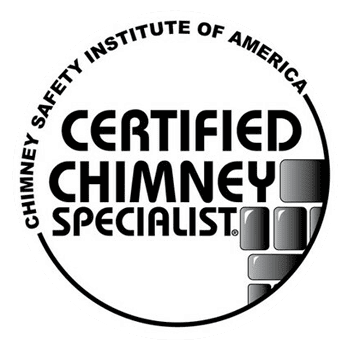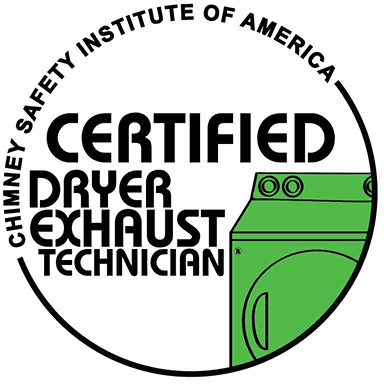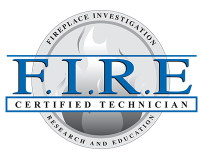Chimneys play a crucial role in maintaining a safe and efficient fireplace. Over time, they can become damaged due to various factors, such as weathering, water infiltration, or general wear and tear. When faced with a deteriorating chimney, homeowners are often left with the decision of whether to tackle the restoration project themselves or hire a professional. In this article, we will explore the advantages and disadvantages of both options and provide guidance to help you make an informed choice.
1. Introduction: Importance of Chimney Restoration
Your chimney not only adds charm to your home but also ensures the safe removal of smoke and combustion byproducts. A damaged chimney can pose serious risks, including structural issues and fire hazards. That’s why timely chimney restoration is vital to maintain the integrity of your chimney and the safety of your household.
2. Understanding Chimney Restoration
Before delving into the DIY and professional approaches to chimney restoration, it’s important to understand the common issues that chimneys face and the importance of addressing them promptly. Common chimney problems include cracks in the masonry, damaged flue liners, deteriorated mortar joints, and water leaks. Ignoring these issues can lead to more extensive damage, costly repairs, and even potential health hazards.
3. The DIY Approach to Chimney Restoration
Pros of DIY Chimney Restoration
DIY chimney restoration can be an appealing option for homeowners who enjoy taking on home improvement projects. It offers several benefits, including cost savings, a sense of accomplishment, and the ability to work at your own pace. Additionally, tackling the restoration yourself allows you to have complete control over the process and ensures that every detail is addressed according to your preferences.
Cons of DIY Chimney Restoration
While the DIY approach may seem enticing, it’s important to consider the potential challenges and drawbacks. Chimney restoration requires specific knowledge and skills, including masonry work, carpentry, and familiarity with local building codes. Without adequate expertise, there is a risk of improper repairs that can compromise the structural integrity of the chimney and decrease its efficiency. Furthermore, DIY restoration may take longer than expected, causing inconvenience and potential disruption to your daily life.
4. Hiring Chimney Restoration of KC
Benefits of Hiring a Professional
When it comes to chimney restoration, enlisting the services of a professional can provide numerous advantages. Professionals possess the necessary expertise, experience, and specialized equipment to identify and address chimney issues efficiently. They are well-versed in the latest industry practices and can ensure that the restoration is done in compliance with local regulations. Moreover, professional chimney restoration comes with warranties, providing peace of mind and protection for years to come.
5. Factors to Consider for DIY Chimney Restoration
If you’re considering the DIY route for chimney restoration, several factors need careful consideration.
Assessing Your Skills and Experience
Chimney restoration requires a range of skills, including masonry work, carpentry, and an understanding of chimney anatomy. Assess your capabilities honestly and determine whether you possess the necessary expertise to complete the restoration effectively. Keep in mind that a poorly executed DIY restoration can lead to additional expenses and potential safety hazards.
Safety Precautions and Equipment
Chimney restoration involves working at heights, handling tools, and dealing with potentially harmful substances. Ensure you have the appropriate safety equipment, such as harnesses, gloves, goggles, and masks. Familiarize yourself with safety protocols and take all necessary precautions to protect yourself and others.
Knowledge of Local Building Codes
Compliance with local building codes is crucial to ensure a safe and legal chimney restoration. DIYers must educate themselves on the specific regulations governing chimney repairs in their area. Failure to adhere to these codes may result in fines, insurance issues, or complications when selling the property.
6. Cost Analysis: DIY vs. Professional Chimney Restoration
Cost is a significant factor in any home improvement project, and chimney restoration is no exception. Let’s examine the cost breakdown of both DIY and professional chimney restoration to better understand the financial implications.
Cost Breakdown of DIY Restoration
The primary advantage of DIY chimney restoration is the potential cost savings. By eliminating labor costs, you can save a significant amount of money. However, it’s important to consider the expenses associated with materials, specialized tools, permits, and potential mistakes that may require professional intervention.
Cost Breakdown of Professional Restoration
Hiring a professional for chimney restoration comes with its own cost considerations. The total cost typically includes labor, materials, permits, and any additional services provided, such as chimney inspections and cleanings. While professional restoration may require a higher upfront investment, it often ensures quality workmanship, long-term durability, and potential savings on future repairs.
Long-term Cost Implications
When evaluating the cost of chimney restoration, it’s essential to consider the long-term implications. A properly restored chimney is less likely to experience recurring issues, reducing the need for frequent repairs. Professional restoration often provides warranties that offer financial protection in case of unforeseen problems. On the other hand, improper DIY restoration may lead to ongoing maintenance costs or the need for professional intervention in the future.
7. Case Studies: DIY vs. Professional Chimney Restoration
To illustrate the outcomes of DIY and professional chimney restoration, let’s explore a few real-life case studies.
Real-life Examples Showcasing the Results
Case Study 1: DIY Restoration
John, an enthusiastic DIYer, decided to restore his chimney on his own. While he successfully repaired the visible cracks, he missed the signs of a deteriorated flue liner. As a result, he experienced recurring smoke backdrafts and eventually had to hire a professional to rectify the issue. The initial cost savings of DIY restoration were overshadowed by the subsequent expenses.
Case Study 2: Professional Restoration
Sarah, on the other hand, hired a professional chimney restoration company to address her chimney issues. The professionals conducted a thorough inspection, identified multiple underlying problems, and performed the necessary repairs using high-quality materials. Sarah’s chimney was restored to its optimal condition, and she gained peace of mind knowing that the restoration was done by experts. The long-term cost savings and reduced risks justified the investment.
Success Stories and Challenges
While DIY chimney restoration success stories do exist, they often require individuals with extensive knowledge and experience in construction or masonry work. Challenges faced during DIY restoration can range from unforeseen issues that require professional expertise to compromised safety due to inadequate equipment or lack of skill.
8. Recommendations and Best Practices
Based on the considerations discussed, here are some recommendations and best practices for chimney restoration:
- When to Choose DIY Restoration: If you have the necessary skills, experience, and knowledge, and the restoration required is minor, DIY restoration can be a viable option. Ensure you are well-prepared, equipped with the right tools, and familiar with local regulations.
- When to Hire a Professional: If the restoration involves extensive damage, structural issues, or if you lack the expertise, it’s advisable to hire a professional. Professionals can handle complex repairs, guarantee quality work, and ensure compliance with safety and building codes.
- Maintaining a Regular Chimney Maintenance Schedule: To avoid major restoration projects, it’s essential to follow a regular maintenance schedule for your chimney. Annual inspections, cleanings, and minor repairs can prevent minor issues from escalating into costly problems.
9. Conclusion
Chimney restoration is a critical aspect of maintaining a safe and efficient fireplace. Whether you choose the DIY approach or opt to hire a professional, it’s essential to make an informed decision based on your skills, resources, and the extent of the restoration required. While DIY restoration may offer cost savings and a sense of accomplishment, professional restoration provides expertise, efficiency, and long-term peace of mind. Remember to prioritize safety, comply with local regulations, and maintain a proactive approach to chimney maintenance.











